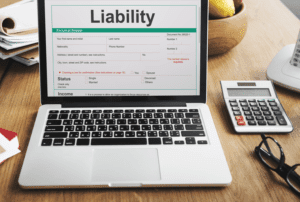Conceptually, the net cash flow equation consists of subtracting a company’s total cash outflows from its total cash inflows. Operating cash flow is calculated by starting with net income, which comes from the bottom of the income statement. Since the income statement uses accrual-based accounting, it includes expenses that may not have actually been paid for yet. Thus, net income has to be adjusted by adding back all non-cash expenses like depreciation, stock-based compensation, and others. Cash flow from investing (CFI) or investing cash flow reports how much cash has been generated or spent from various investment-related activities in a specific period. Investing activities include purchases of speculative assets, investments in securities, or sales of securities or assets.
- At first, it can be challenging, but you will manage your business finances better once you get the hang of things.
- Cash flow problems are never fun (remember they’re responsible for a large majority of small business failures), so it’s important to ensure positive cash flow before you start spending.
- Negative cash flow from investing activities might be due to significant amounts of cash being invested in the company, such as research and development (R&D), and is not always a warning sign.
- Next, our company’s long-term debt balance was assumed to be $80m, which is decreased by the mandatory debt amortization of $5m.
- Chase offers a wide variety of business checking accounts for small, mid-sized and large businesses.
- The sum of the three cash flow statement (CFS) sections – the net cash flow for our hypothetical company in the fiscal year ending 2021 – amounts to $40 million.
Keeping track of cash flow into and out of your business means you have a more holistic understanding of your business’s financial health. You can anticipate cash flow problems and solve them before they hit, and you can optimize your operations so cash flow troubles become a thing of the past. The good news is that because Maya won’t be making major equipment purchases every quarter, she’ll spend less and have an opportunity to turn her cash deficit around on her next cash flow statement.
What is the Free Cash Flow (FCF) Formula?
This includes proceeds from issuing stocks or bonds, loan proceeds, and expenses related to repaying loans or paying dividends. Free cash is the cash left over after the business has met all its obligations. It’s essential to planning future spending as it shows how much cash a business has at its disposal.
Investors use free cash flow to measure whether a company might have enough cash for dividends or share buybacks. In addition, the more free cash flow a company has, the better it is positioned to pay down debt and pursue opportunities that can enhance its business, making it an attractive choice for investors. These items are all listed in a cash-flow statement, but can also be identified by comparing non-current assets on the balance sheet over two periods. Whether you’re a manager, entrepreneur, or individual contributor, understanding how to create and leverage financial statements is essential for making sound business decisions. Both the direct and indirect methods will result in the same number, but the process of calculating cash flow from operations differs.
What is Cash Flow from Operations?
And monitoring and managing cash flow well can mean the difference for your business between just getting by and actively thriving. Like so many other business owners before her, Maya has discovered that she needs what is cash flow to get a better handle on how cash moves into and out of the bakery over time. Incremental Cash Flow Analysis is crucial for evaluating new investments, aiding businesses in decision-making and growth in 2024.
One study showed that 30% of businesses fail because they run out of money. Using cash flow formulas can help you prepare for slow seasons and ensure you have enough money on hand before spending on your business. The point of Maya’s story is that preparing regular cash flow statements can give you a powerful tool for keeping your business financially healthy. For example, you may experience shortfalls in cash during busy seasons when you overspend on inventory and supplies. Upgrading the fleet results in significant annual incremental cash flows of $162,500, with a salvage value adding to the final year’s benefit. The substantial increase in revenue and efficiency presents a compelling case for the investment.












